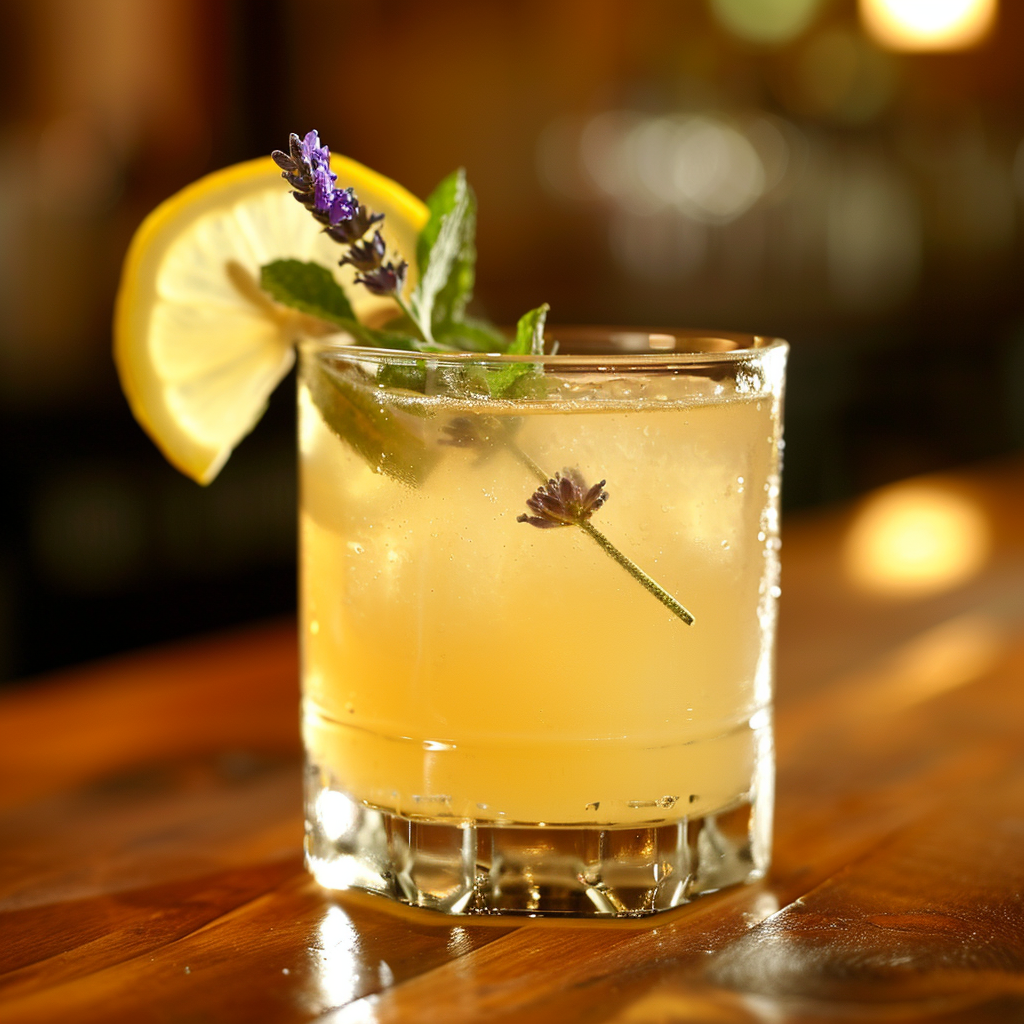What to Mix with Gin. Unveiling Delicious Pairings and Cocktail Inspirations.
Table of Contents:
Gin & Tonic
Martinis
Negronis
Berry Mixers
Bitters
Creative Ideas
The Art of Gin Mixology: A Brief Introduction
Unlike other spirits, gin is almost always consumed as a cocktail rather than neat. Showing remarkable versatility, gin’s superpower is its neutral base and botanical flavor profile that complements mixers and other ingredients without overpowering them.
Milestones in gin mixology include the Gin Punch, first appearing in England in the 1730’s, the infamous Gin & Tonic and Martini, both emerging around 1860; and the Negroni, coming on the scene around 1900.
Gin’s popularity, extending across cultures and continents, has contributed to the amazing range of gin cocktails from timeless classics to innovative creations.
Timeless Classics: Gin's Traditional Mixers
Gin & Tonic
The quintessential gin mixer is, of course, tonic. It’s difficult to imagine one without the other. The iconic Gin & Tonic has colonial roots, first mentioned in the 1860’s in India. Quinine, an extract from the bark of the cinchona tree was used in South America and elsewhere to treat malaria, chills, and fever. British officers mixed gin with quinine, sugar, water, and lime to make the bitter quinine more palatable.
The Martini
The Martini, another timeless gin cocktail, has become a symbol of sophistication and elegance. Some attribute its creation to a bartender in the United States during the 19th century, while others believe it has European roots. Regardless of its origin, the Martini's popularity soared in the United States during the early1900’s, especially during Prohibition when gin was easier to produce illicitly than whiskey. The classic Martini consists of gin and dry vermouth, garnished with an olive or a lemon twist. Over the years, variations and personal preferences have led to a range of Martini recipes, including those made with vodka instead of gin.
The Negroni
As the cocktail culture continued to evolve, bartenders experimented with different ingredients, creating new and exciting gin-based cocktails. The Negroni, a classic Italian cocktail, emerged in the early 20th century and features equal parts gin, sweet vermouth, and Campari. It’s become a favorite among cocktail enthusiasts and one of the most popular cocktails consumed today. Other enduring classics include The Aviation, The Tom Collins, and The Gimlet.
Fresh & Fruity: Citrus and Berry Mixers
Gin and citrus are another illustrious pair that come together to create refreshing and vibrant cocktails. Since most gins have citrus notes, the additional lemon, lime, or grapefruit harmoniously enhances the inherent flavor of the gin.
Berries are another natural companion to gin. Strawberries, raspberries, blueberries, and blackberries can add aroma, sweet/tart notes, and visual punch to a Gin & Tonic, Martini, Gin Punch or other cocktail.
THE SOUTH SIDE
2.0 oz Revivalist Garden Gin 1.0 oz Lime juice 1.0 oz Simple syrup 5 Sprigs of mint
GLASS: Nick & Nora glass
GARNISH: None
1. Rub mint leaves on inside of shaker
2. Add lime juice, simple syrup, and ice and shake
3. Strain into chilled Nick & Nora glass
EASY BEESY
2 oz Revivalist Garden Gin
1.0 oz Lemon juice
0.75 Honey ginger syrup 2 Small sprigs of rosemary
GLASS: Coupe glass
GARNISH: Lemon twist
1. Add all ingredients to shaker with ice
2. Shake hard for 8-10 seconds
Enhancing Flavor: The Role of Bitters
Bitters are an essential part of every mixologist’s repertoire, enhancing and elevating the overall cocktail experience. Like gin, bitters are made by infusing herbs, spices, fruits, barks, and roots in an alcohol base. These highly concentrated aromatic liquids are typically used in small amounts to add complexity, depth, and balance to cocktails. They are often used to offset the sweeter ingredients in a cocktail, enhance the botanicals present in gin, and stimulate the senses with their intense aromatics.
GIN SOUR
2 oz Revivalist Garden Gin 1 oz Lemon juice 0.75 oz Elderflower syrup Pinch of celery salt
GLASS: Rocks or Coup
GARNISH: Ornamental flower
1. Add all ingredients to shaker 2. Shake without ice 3. Add ice to shaker 4. Hard shake with ice
Craft Your Own: Tips for Experimental Mixology
To create a well-balanced cocktail, you need to consider the interplay of sweet, sour, bitter, salty, and umami elements. Here are some quick tips from the pros:
If you're new to cocktail making, start with a classic recipe to learn the basic proportions of ingredients.
Consider the base spirit, such as gin, vodka, rum, or whiskey and what its flavor profile contributes. Ensure that the other ingredients complement rather than overpower the characteristics of the base spirit.
Identify the primary flavor components in your cocktail and their sources (e.g., in a gin sour, sweetness from simple syrup, sourness from lemon, etc.)
Note the ratios of ingredients, then adjust the amounts of sweet, sour, and bitter to suit your taste.
A little sweetness goes a long way, so use sweeteners judiciously. Simple syrup, honey, and agave nectar can add sweetness but remember that other ingredients may contribute to the overall sweetness as well.
Citrus, like lemon or lime juice, often provides the sour element. Note that sweet and sour are counterbalancing tastes, so the amount of citrus can be adjusted to balance the sweetness.
Bitters or bitter liqueurs can add complexity and balance to a cocktail. Experiment with the amount of bitters but don’t let it dominate the drink.
Texture also adds to the overall cocktail experience. Ingredients like egg whites or juices can add a silky or frothy texture,
The grand finale is the garnish, contributing aromatics and additional flavors. Citrus, herbs, or other garnishes not only enhance the taste but up the visual appeal as well.
Remember that developing delicious, balanced cocktails takes time, trial and error, and an understanding of how flavors mingle on the palate. Be brave and experiment, then create your own signature cocktail.
Raising the Glass: The Journey of Flavor Exploration
In recent years, the craft movement has further elevated the status of gin with new botanical combinations that challenge expectations. Bartenders are responding by creating innovative and sophisticated cocktails that showcase these adventurous spirits. Using novel ingredients like elderflower, chamomile, and cucumber, mixologists are introducing more complex, uncommon, and exciting cocktail creations.
FLOWER BED
1 oz Revivalist Garden Gin 0.5 oz Lemon juice
0.5 oz Elderflower syrup
4 oz Chilled champagne
GLASS: Champagne flute/Champagne saucer
GARNISH: Lemon twist
1. Add gin, lemon juice, and syrup to shaker with ice
2. Shake hard for 10 seconds
3. Double strain into a chilled champagne flute 4. Top with champagne
GARDEN PUNCH
2 oz Revivalist Garden Gin 0.75 oz Lemon 0.75 oz Simple syrup 1–2 oz Chamomile tea
GLASS: Large rocks glass
GARNISH: Lemon wheel & mint or lavender sprig
1. Pour all ingredients in a shaker half-filled with ice 2. Shake for 3-5 seconds 3. Strain into large rocks glass over one large ice cube







